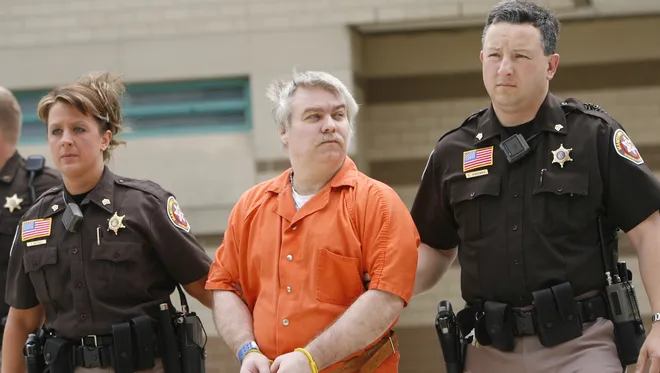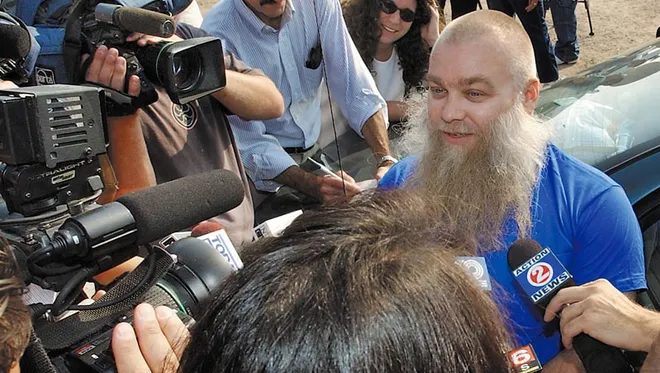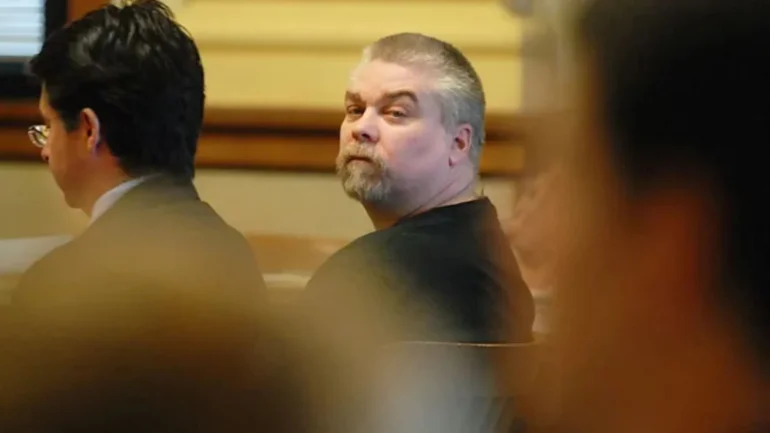Steven Avery, an American laborer, has been the main focus of a deeply discussed legal controversy. He was born on July 9th in 1962 at Manitowoc County which is located within Wisconsin’s boundaries. In the year 1985, Avery received an unjust sentence being guilty for sexual assault and also trying to murder someone.
He spent around 18 years in prison before he got cleared from his crime through DNA proof that surfaced in 2003. After four years of gaining freedom, Steven was once again convicted for murdering Teresa Halbach who worked as a freelance photographer back then; this incident took place during October month of year 2005 and till now he continues serving life imprisonment without any possibility to get parole.
Early Life and First Legal Troubles
Growing up within a family that ran a salvage yard located in rural Gibson, Wisconsin; his beginning life narrates encounters with law. At the age of 18 during 1981 he was convicted for burglarizing a bar and later in 1982 faced charges related to animal cruelty.

These events hinted at a future of frequent law problems, something that indeed came true in his adult years. Even though Avery had early convictions, the bigger events of his life happened in 1985 when he was wrongly found guilty for sexual assault and attempting murder.
He spent 18 years out of a total sentence length 32-year term before being proven innocent with help from DNA tests; this occurred during the year 2003.
Wrongful Conviction and Exoneration
The case of Steven Avery, who was wrongly accused and put in jail for the sexual assault and attempted murder of Penny Beernsten, happened in 1985. The main proofs used against him were her eyewitness identification plus hair evidence that turned out to be incorrect later on.
Even though he brought forth 16 alibi witnesses along with proof showing he couldn’t have done the crime within a given time period, Avery still got sentenced to 32 years imprisonment.
After spending almost two decades incarcerated, post-conviction DNA testing conducted in 2002 connected this offense with Gregory Allen, another criminal having similar appearance as Mr. Avery’s likeness does as well. This other proof, together with the truth about incorrect hair analysis, resulted in Avery being declared innocent and set free from jail during 2003.
Murder of Teresa Halbach
Teresa Halbach, who was a photographer of 25 years old, went to Avery’s Auto Salvage on October 31st in the year 2005 to take pictures of a van that she planned to sell through Auto Trader magazine. After this day she was never seen alive again.
Her car was discovered at the salvage yard and then police started searching there. Following the next week, a key to Avery’s car was found in her house. Also, blood, which was later recognized as belonging to Avery, was located in her car. Bones that were human were discovered at a place called burn pit close to Avery’s home.
These bones turned out to belong to someone named Halbach. Avery was caught and faced with legal charges for murder, taking a person by force, sexually harming someone, and badly damaging a dead body.
Brendan Dassey, who is his nephew, got accused too as an accessory in this case. In the beginning, Dassey accepted committing the crime but afterwards withdrew his statement saying it was made under pressure. Steven Avery kept on insisting that he did not do it and blamed law enforcement for setting him up so they could ruin his civil lawsuit.
The Trials and Convictions of Steven Avery
The murder trial of Steven Avery in 2007 was overseen by Calumet County District Attorney Ken Kratz, who brought forth different pieces of evidence. These included Avery’s blood being discovered inside Teresa Halbach’s car and human remains that matched her DNA found at Avery’s burn pit.
The defense countered by saying police had planted the evidence to frame him. Steven Avery always proclaimed his innocence, asserting that he was singled out due to his $36 million lawsuit against Manitowoc County for wrongly accusing him before. Even though 16 individuals came forward as alibi witnesses, Steve was found guilty on charges of first-degree murder and illegal possession of a firearm; he received life imprisonment without parole.
In another court case, Brendan Dassey, who is Avery’s nephew, was found guilty of killing someone, having sex with someone without their permission, and changing the body in a way that no one could recognize. He later said he was sorry for his confession because it happened under pressure.
The Controversy and Debate
The Steven Avery case is very interesting because of the big problems linked with wrong identification by witnesses, claims about evidence being put there and pressure during admitting guilt. The statement from Penny Beernsten was very important in causing Avery to be wrongly found guilty in 1985.
This shows how much we can trust what eyewitnesses say and how their memories might not always match up with reality. The use of hair evidence and science in the case also brings up doubts on these kinds of proofs used for criminal matters.

Accusations about placed evidence, such as blood and a car key, made the case even more intricate. It triggered doubts of tampering and control by law enforcement. The confession from Brendan Dassey which he then denied drew focus on how police interviews can involve force and the significance of having legal help or parents present in these circumstances.
These elements from the Steven Avery story highlight how complicated and difficult things can be within our criminal justice system, especially when it comes to managing proof and safeguarding people’s rights during investigations or trials.
The Impact and Legacy
The documentary series “Making a Murderer” (2015-2018) was greatly watched by the public and became famous. In its first season, it concentrated on Steven Avery’s conviction that turned out to be wrong and then him getting freed. It also showed how his nephew Brendan Dassey got convicted for the same crime. The series stirred up a lot of criticism and controversy, particularly from law enforcement and local communities in Manitowoc County, Wisconsin where these events happened.
The situation with Steven Avery is a complicated and many-sided story that has fascinated people globally, bringing up significant queries about the criminal justice system, evidence trustworthiness, and how media affects legal actions. The path of Avery from incorrect conviction to being accused for murder has caused disputes, discussions and continuous legal fights. It shows the intricate nature of the law system. The story left by his case is an important reminder that we should always strive for openness, responsibility and impartiality in our search for justice.

